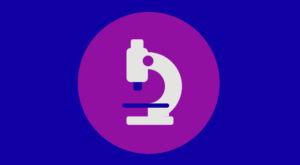By Elizabeth Owuor
To honor Black History Month, 23andMe is sharing the untold stories of a few of the African-American scientists and figures who contributed to science each of whom made their mark despite great societal and institutional obstacles.
Overlooked, intentionally erased from the history books, or simply discredited. Henrietta Lacks, a young African American mother from Baltimore, made her contribution to scientific advancement without ever knowing it. Cells from the tumor that killed her were taken and regrown in labs around the world without her or her family’s permission and became one of the most important cancer cell lines in medical history.
After visiting Dr. Howard Jones at the Johns Hopkins Medical Center in 1947, Lacks underwent a gynecological tumor biopsy and her cells were sent to a neighboring lab – without her knowledge or consent — where they were later harvested to create HeLa Cells, the first infinitely reproducing cell line in medicine.
In fact, no one knew of Lack’s essential contribution to science and the world-at-large until it was finally acknowledged nearly 40 years after her first visit to Johns Hopkins in Baltimore. But Lacks isn’t the only African-American to aide scientific advancement without being fully acknowledged or credited. Throughout the ages, other Black figures have helped advance chemistry, genetics, pathology, and other essential scientific fields without getting due credit. In an effort to honor these hidden figures, we’ve collected a short roundup of a few of the overlooked sheroes and heroes whose contributions, even in the face of racial persecution and institutional disenfranchisement, left an important mark on the world of science and beyond.
Alice Ball: The Collector of Many Firsts
1892-1916
Chemist Alice Ball didn’t shy away from being a pioneer: the first African American and the first woman to graduate with a Master’s in chemistry from the College of Hawaii (now the University of Hawaii), Ball later went on to be the first female chemistry professor at her alma mater.
But Ball was already accomplishing firsts long before graduating. A native of Seattle, she was born in 1892, at a time when women — particularly women of color — were denied access to education and employment. Ball earned her undergraduate degrees in pharmaceutical chemistry and pharmacy from the University of Washington, before pursuing her graduate work in Hawaii. During the course of her career, she pioneered a treatment for leprosy, or Hansen’s disease, that was eventually coined the “Ball Method” due to its highly effective treatment of the symptoms of this vexing disease. The first injectable treatment of its kind, Ball’s treatment used oil from the chaulmoogra tree, which had previously only been used topically with mixed results. Medical professionals relied on Ball’s invention for 20 years before a new treatment was introduced.
Sadly, Ball wasn’t given full credit for her groundbreaking invention until decades after it was made available to the public. Her untimely death at 24 due to chlorine poisoning in her lab contributed to this, but so did the fact that the president of her university initially took credit for work. Although long overdue, Alice Ball was finally remembered by history in 2010 when the University of Hawaii declared February 29th “Alice Ball Day,” erecting a statue in her honor.
Dr. James Bowman: The Science Renaissance Man
1923-2011
Segregation may have hindered James Bowman from pursuing his dream of becoming an Army medical officer, but it didn’t stop the trailblazer from forging his own path in medicine and genetics despite the many obstacles erected by a racist society.
A 1943 biology graduate of Howard University, Bowman stayed remained at the university to secure his medical degree as part of the of the U.S. Army Medical Corps. He later interned at the Freedmen’s Hospital in Washington, D.C. and completed his residency in pathology at Chicago’s St. Luke’s Hospital from 1947 to 1952.
Always one to continually expand his knowledge base through research, Bowman moved to Iran in 1955 to study G6PD deficiency, a rare genetic disorder also known as favism, that is linked to episodes of anemia and affects one in ten African American men. After successfully diagnosing an Iranian patient with the condition, he took his penchant for research and scientific rigor around the world. From 1961 to 1962, Bowman studied genetics at the Galton Laboratory at University College London and then later settled at the University of Chicago, where his scientific work took him to Uganda, Mexico, Ghana and other nations.
Eventually publishing more than 90 scholarly papers on human genetics, Bowman was also a fierce advocate for African-Americans. He was instrumental in ensuring that governmental and medical institutions considered bioethics and consent when testing on historically marginalized populations.
Marie M. Daly: The Chemistry Pioneer
1921-2003
The first black woman to receive a doctorate in chemistry in the United States, Marie M. Daly dedicated to spreading knowledge and conducting research. Daly pioneered innovative work on the relationship between chemistry and the human body. Inspired by her father who was hindered from completing his chemistry degree at Cornell University due to poverty, Daly received her bachelor’s degree with honors from Queens College in New York. She went on to receive a graduate degree at New York University, supporting her studies via work as a lab assistant.
After completing her master’s degree on an accelerated timeline, Daly began her doctoral studies in chemistry at Columbia University. She studied under the tutelage of Dr. Mary L. Caldwell, a celebrated female scientist who was dedicated to supporting other women in the field.
Ever the curious mind, Daly studied how the body digests food while at Columbia. Ultimately, she completed her doctorate in 1947 and became the first black woman in that nation to procure a chemistry Ph.D. But Daly didn’t stop her groundbreaking research there. After completing a seven-year research program at the Rockefeller Institute of Medicine, the scientist returned to her alma mater to investigate the relationship between clogged arteries and high cholesterol. In partnership with her colleague, Dr. Quentin B. Deming, Daly was responsible for revealing that dietary choices affect heart health and the circulatory system.
The Importance of Diversity in Genetic Research
Did you know that Africans and African Americans make up less than 4 percent of individuals included in genetic studies, according to a recent study? The fact that these individuals face many serious health outcomes and could benefit from the insights gained from genetic inquiry makes the present situation even more untenable. What’s more is that Africans and people of African ancestry are more genetically diverse than all the world’s populations combined. That’s why diversity in genetic research is so crucial. Insights for one group benefit all of us. And that’s not all, the need for diversity also extends to the scientists who conduct research. Ensuring that the scientific community looks more like the world around us will enable us to account for a wide-variety of perspectives. More diverse perspectives in the science community means better scientific research, and potentially more precise scientific advancements.
Know of any other hidden figures in the realm of scientific advancement? Join the conversation by commenting below.




